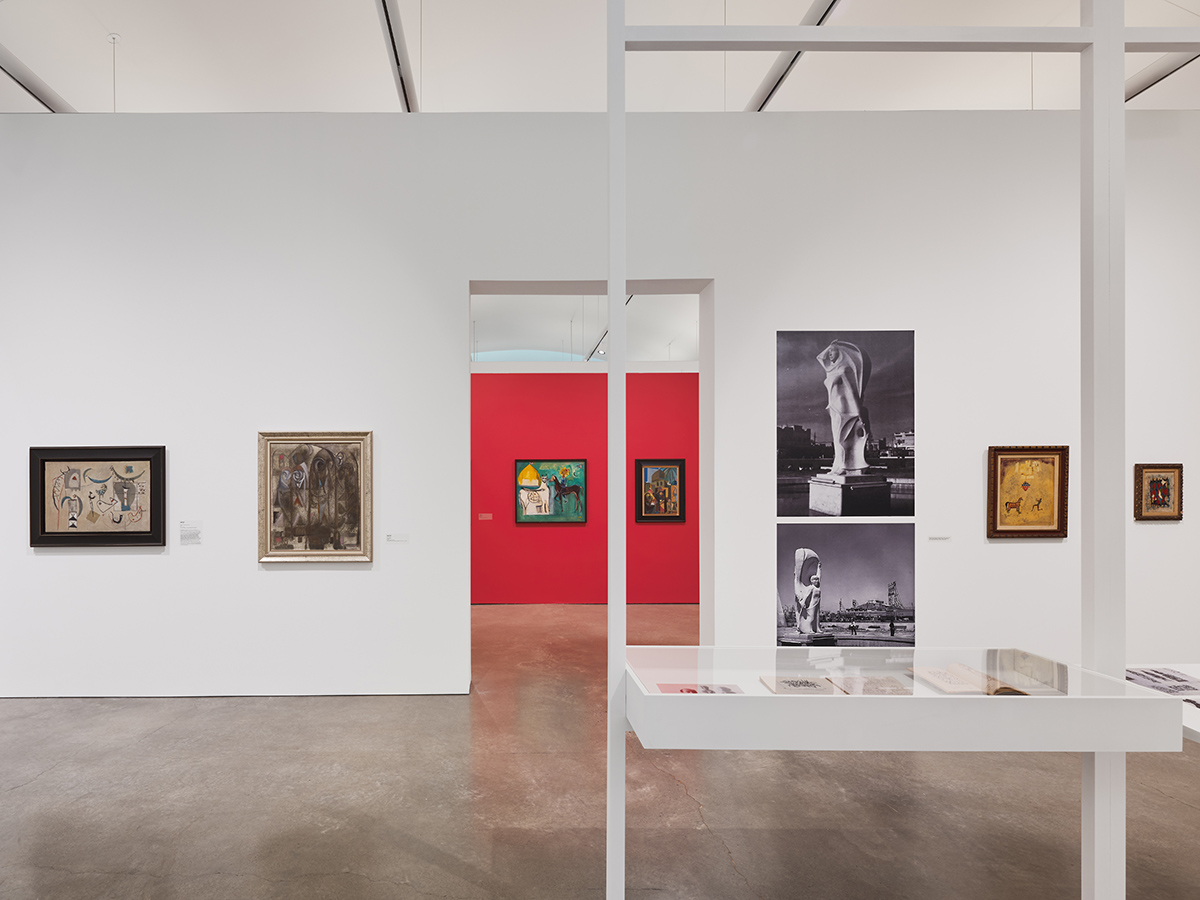Unexplored art born from a city in flux
The exhibition ‘All Manner of Experiments: Legacies of the Baghdad Modern Art Group’ offers a welcome opportunity to discover more about a pioneering art movement which emerged at a critical point in Iraq’s history and heralded a new era of experimentation and expression. Curator and expert in modern Iraqi art history Nada Shabout takes us behind the scenes of this landmark show, which is expected to travel from the US to the Middle East in the not-too-distant future.

Nada Shabout
When Nada Shabout was asked by the Bard Center for Curatorial Studies to curate an exhibition showcasing the work of the Baghdad Modern Art Group (BMAG), the expert in modern Iraqi art history didn’t have to think long before saying yes.
“I immediately felt that this would be an amazing opportunity to raise the profile of these artists and, for the first time in the US, give some welcome context to a key chapter in the history of Arab modern and contemporary art,” she said. “Admittedly, the group has become better known of late in some circles, with names like Jewad Selim cropping up. But not much has been done below the surface. This project offered us a chance to really delve deeper into the group - both its membership and the impact of its legacy.”
Assisted by Tiffany Floyd, a specialist in modern Iraqi art, and Lauren Cornell, Artistic Director of CCS Bard, ‘All Manner of Experiments: Legacies of the Baghdad Modern Art Group’ opened in June 2025 at Bard College’s Hessel Museum of Art, New York, to great acclaim.

Showcasing 64 paintings, sculptures and drawings by 30 high-profile and lesser-known artists working across the decades, the exhibition takes the form of an in-depth, encompassing exploration of the BMAG’s origins and evolution, from 1951 through to the early 1970s. Audiences will also find an abundance of fascinating archival material, which provides an added dimension to the exhibition and gives a valuable insight into how the city’s art scene was developing as Iraq entered a new era.
“These were times of great change, with the country now free from British rule, but still very much finding its identity amid post-colonial, political turbulence,” Nada explained. “The Baghdad Modern Art Group emerged at the intersection of these sociopolitical changes, signalling a new phase of modern experimentation and expression.”
The BMAG’s two founders - Jewad Selim and Shakir Hassan Al Said (often referred to as Hassan) - inevitably feature prominently in the show in their multifaceted roles of artists, pioneers of the movement, tutors and mentors. Alongside their artworks, viewers will find the group’s manifesto and other documents detailing its founding philosophy of ‘Istilham al turath’ (a shared commitment to creating modern art rooted in their rich cultural and artistic heritage, rather than simply imitating Western modernist movements, using innovative practices and techniques).
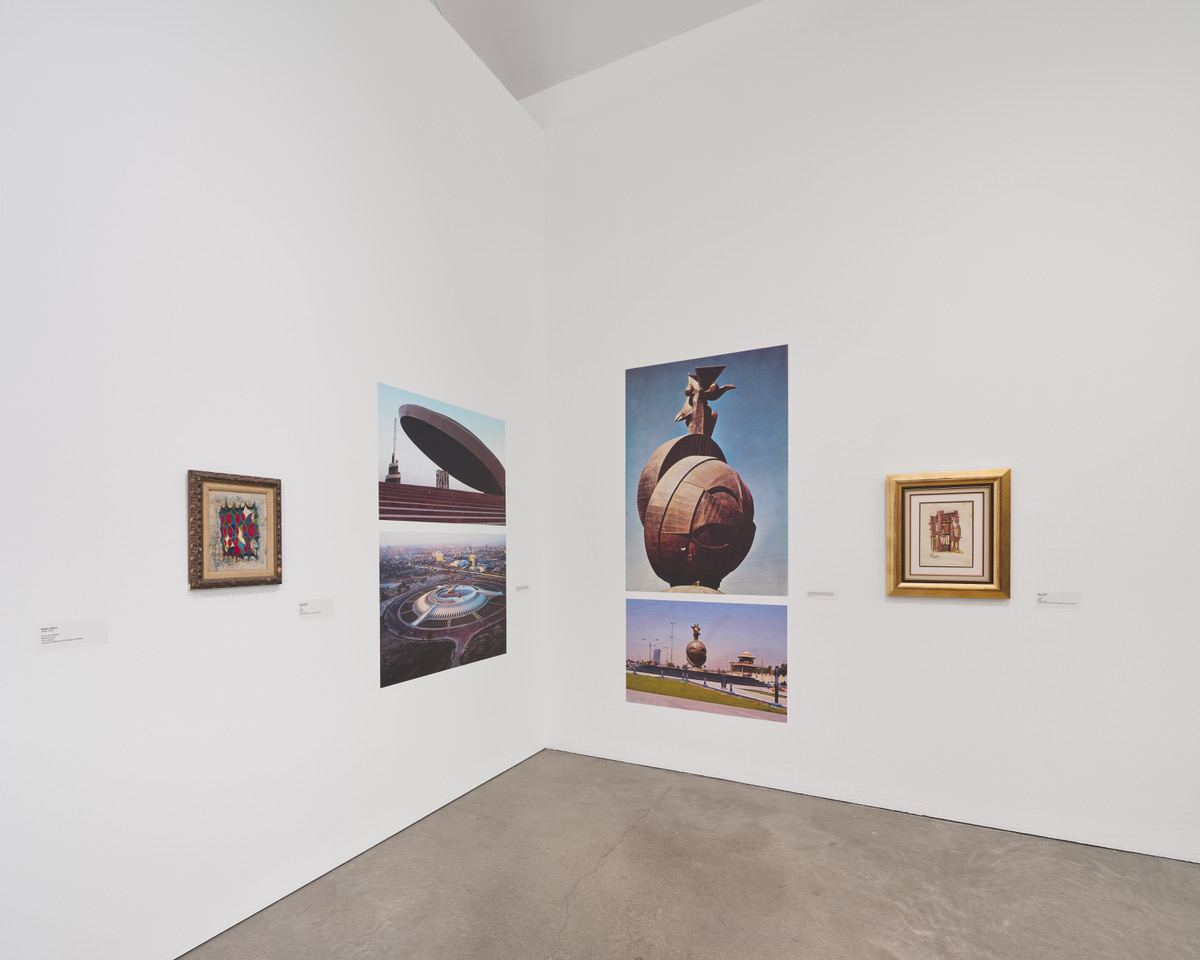
The other artists whose work is featured range from lesser-known contemporaries of the founding members to others who were inspired by the group and took its legacy forward. These include: Faraj Abbu, Mohammed Himat Ali, Sadik Kwaish Alfraji, Dia al-Azzawi, Rasoul Alwan, Khalil al-Ward, Qahtan Awni, Bogus Bablanian, Amar Dawod, Ismail Fattah, Ghassan Ghaib, Mohammed Ghani Hikmat, Jabra Ibrahim Jabra, Fouad Jihad, Ardash Kakafian, Hanaa Malallah, Mahmoud Obaidi, Widad al-Orfali, Suad al-Attar, Khalid al Rahal, Miran al-Saadi, Mahmoud Sabri, Naziha Selim, Nazar Salim (Nizar Selim), Lorna Selim, Kareem Risan, Walid Siti and Nazar Yahya.
The archival material - which matches the artworks on display in terms of volume, much to Nada’s satisfaction - includes a collection of postcards featuring the work of Latif al-Ani, a prominent photographer of the time, and historic newsreel footage, while artist-designed brochures, exhibition posters and notes, provide snapshots of the city’s evolving art scene. There are also clippings of public works created by architects.
These artefacts provide valuable glimpses of the city’s cultural dynamics of the time, as Nada explained. “Importantly, there is plenty of evidence that the middle classes were already consuming art, from information about exhibition attendances to coverage of new public works like Jewad Selim’s Freedom Monument,” she noted. “We can gauge from these details that the Baghdad art scene of the 1950s and 1960s was certainly not elitist.”
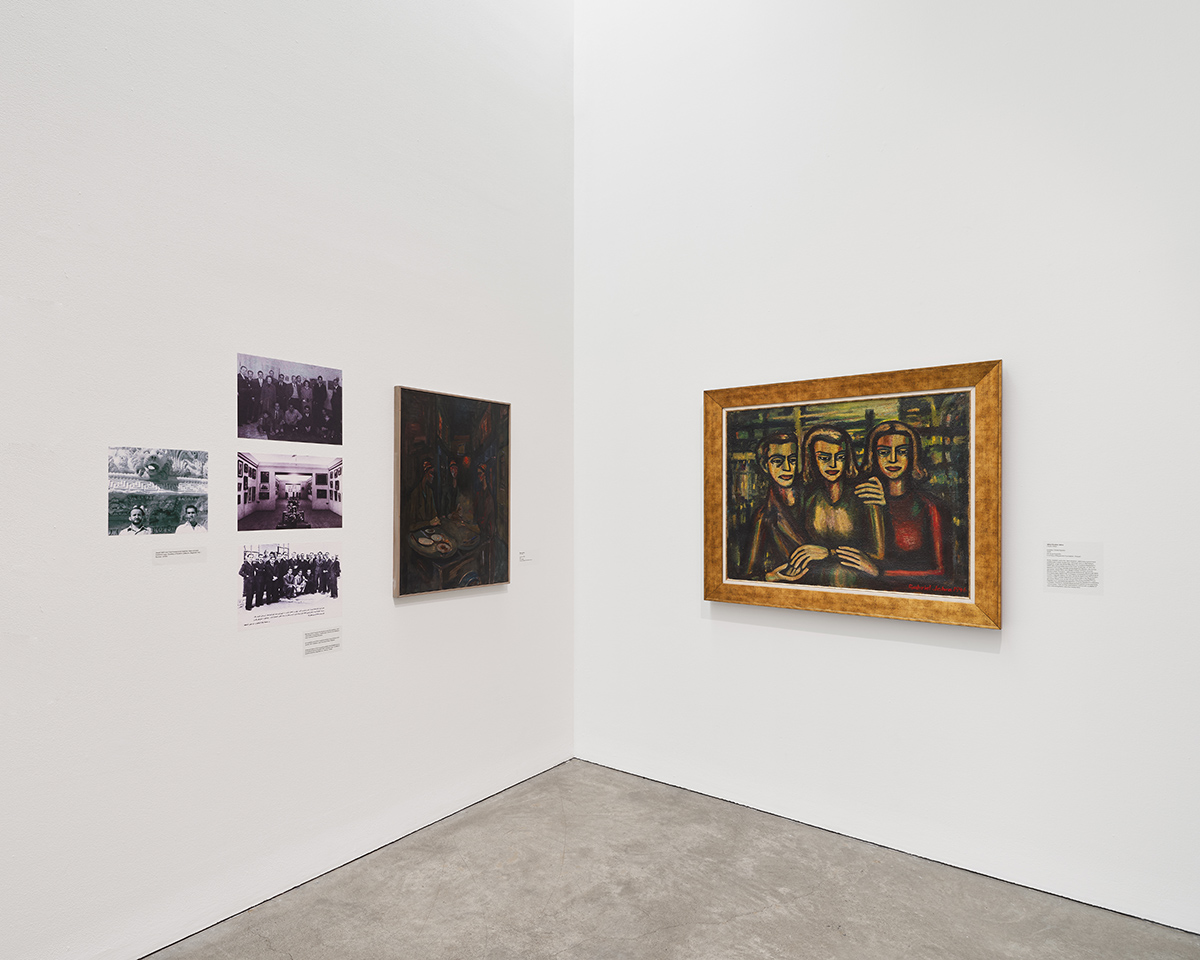
The works and archived documents also provide audiences with critical insight into how each artist chose to comment on the turbulent sociopolitical landscape of the time, whether subtly or more directly.
“For example, there is a work by Jewad Selim titled ‘Baghdadiate’ in which he presents vignettes of an idyllic and romanticised traditional life in Baghdad - a delightful, but essentially fictitious scene,” Nada noted. “Artists choosing to adopt this practice of deliberate denial of the political realities they faced was commonplace then, along with other covert ways of sharing their messages, such as introducing symbols and motifs into their art.”
Other artists, meanwhile, such as Mahmoud Sabri, adopted a more explicit and confrontational approach, rooted in social consciousness and collective responsibility, towards political issues of the time. Sabri’s ‘The Parsnip Seller’, for example, which features in the show, speaks of a different city or reality than Selim’s Baghdad.
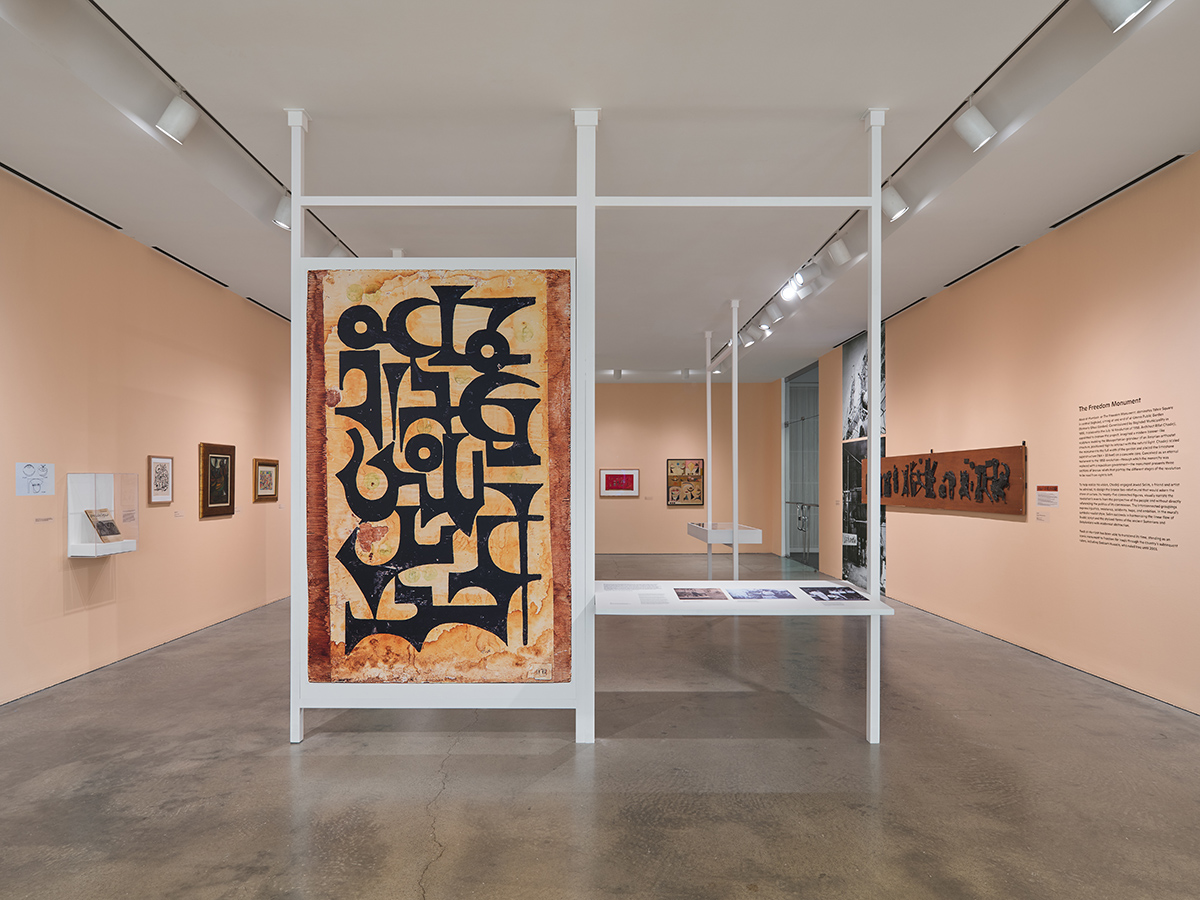
Nada noted that these practices became more widespread among later generations of artists across the region who became increasingly vocal in expressing their feelings about broader, regional issues.
“Many expanded their focus from local Iraqi concerns to conflicts and other contemporary injustices within a pan-Arab framework, such as the occupation of Palestine for example,” she said. “We’ve also seen the diaspora and specifically displaced artists using their art to help them navigate their own exiles.”
The scale and scope of 'All Manner of Experiments: Legacies of the Baghdad Modern Art Group' inevitably presented challenges for its organisers. Sourcing works by lesser-known artists and verifying and correcting archival material were among the hurdles that the team needed to overcome.
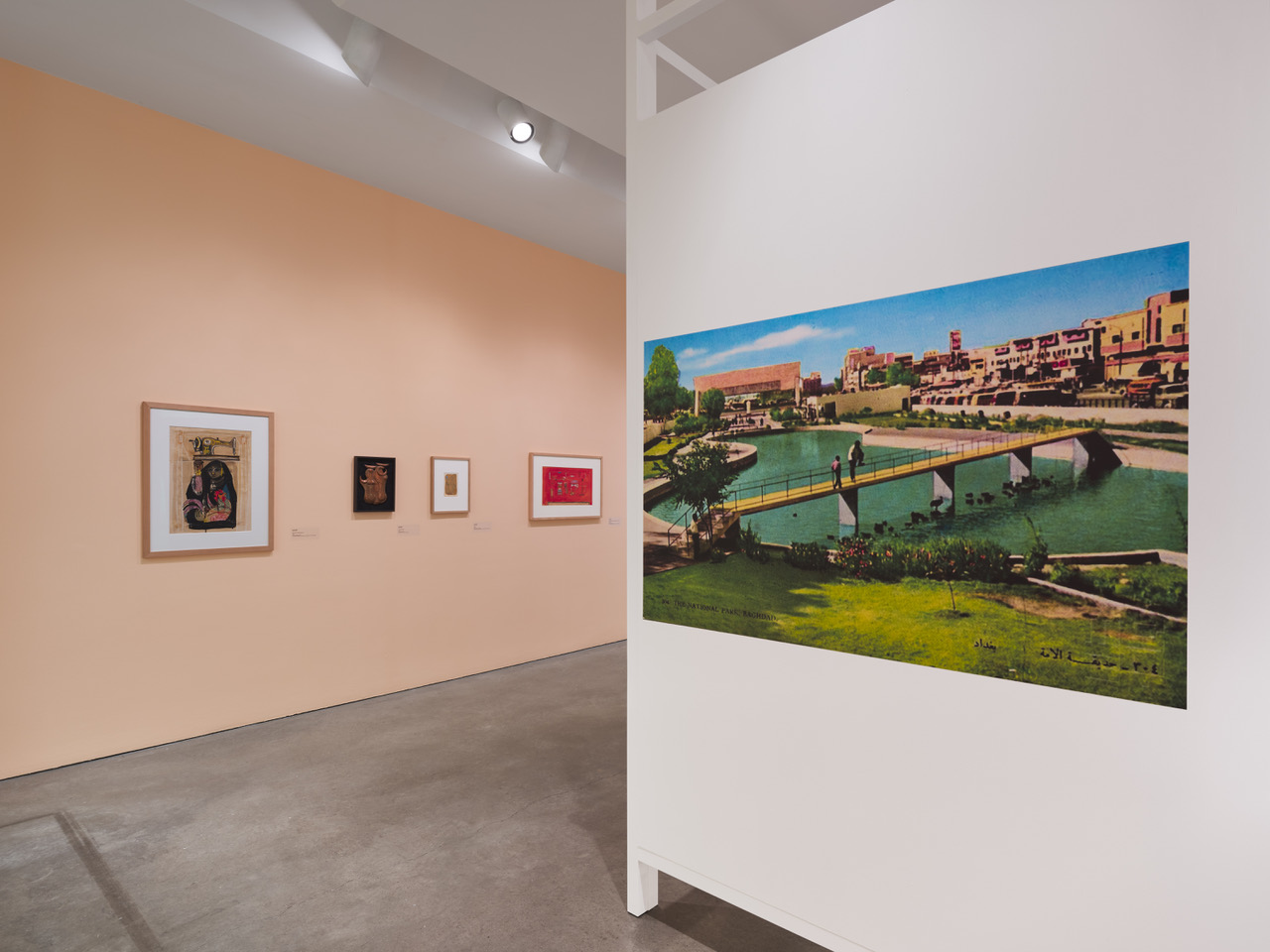
Teamwork and fruitful partnerships proved to be key in bringing the exhibition to fruition, Nada explained, with artworks and other material sourced from several prestigious collections, together with artists themselves and the estates of others. These included the Barjeel Art Foundation, The Ramzi and Saeda Dalloul Art Foundation, the Farjam Foundation, Ibrahimi Collection, Qatar Museums and Mathaf: Arab Museum of Modern Art. “Working on this exhibition was a learning curve for all of us, but we were delighted with the opportunities it presented for collaboration,” Nada said.
She added that on the back of some of these partnerships and broad-based interest in the exhibition, ‘All Manner of Experiments: Legacies of the Baghdad Modern Art Group’ is now expected to travel across to the Middle East after it closes in October.
“Early on in the research phase we quickly realised that this exhibition was just the starting point,” Nada said. “Each cluster will open up opportunities for further research. The core of the show will remain the same, but we hope that each iteration will change, with the chance to expand and include later generations and more beautiful works from this important era.”
‘All Manner of Experiments: Legacies of the Baghdad Modern Art Group’ is currently on view at Bard College's Hessel Museum of Art, New York, and runs until October 19, 2025. Find out more here.
Installation view from All Manner of Experiments: Legacies of the Baghdad Modern Art Group, CCS Bard Galleries, Center for Curatorial Studies, Bard College, Annandale-on-Hudson, NY, June 21 – October 19, 2025. Photo: Olympia Shannon 2025.
